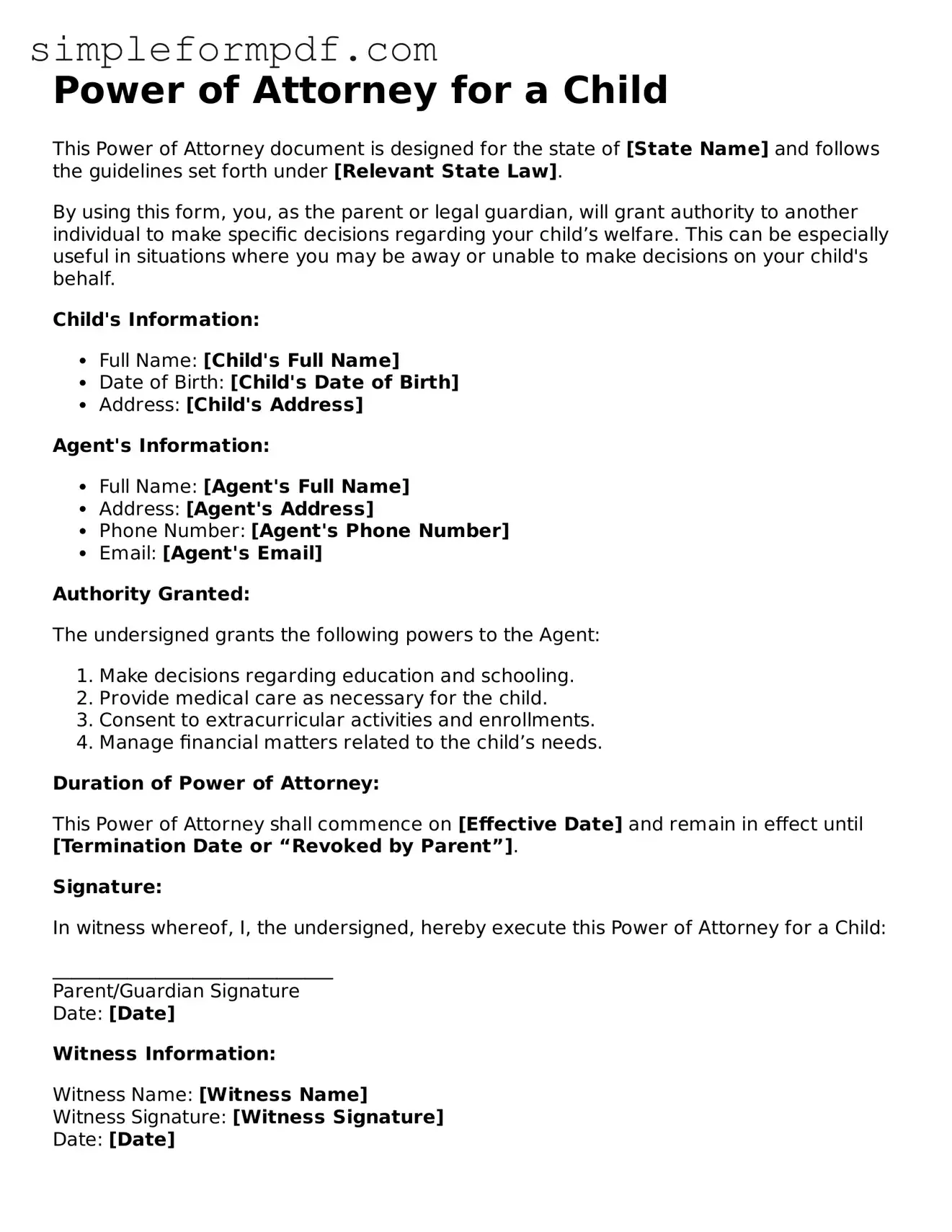Power of Attorney for a Child
This Power of Attorney document is designed for the state of [State Name] and follows the guidelines set forth under [Relevant State Law].
By using this form, you, as the parent or legal guardian, will grant authority to another individual to make specific decisions regarding your child’s welfare. This can be especially useful in situations where you may be away or unable to make decisions on your child's behalf.
Child's Information:
- Full Name: [Child's Full Name]
- Date of Birth: [Child's Date of Birth]
- Address: [Child's Address]
Agent's Information:
- Full Name: [Agent's Full Name]
- Address: [Agent's Address]
- Phone Number: [Agent's Phone Number]
- Email: [Agent's Email]
Authority Granted:
The undersigned grants the following powers to the Agent:
- Make decisions regarding education and schooling.
- Provide medical care as necessary for the child.
- Consent to extracurricular activities and enrollments.
- Manage financial matters related to the child’s needs.
Duration of Power of Attorney:
This Power of Attorney shall commence on [Effective Date] and remain in effect until [Termination Date or “Revoked by Parent”].
Signature:
In witness whereof, I, the undersigned, hereby execute this Power of Attorney for a Child:
______________________________
Parent/Guardian Signature
Date: [Date]
Witness Information:
Witness Name: [Witness Name]
Witness Signature: [Witness Signature]
Date: [Date]
